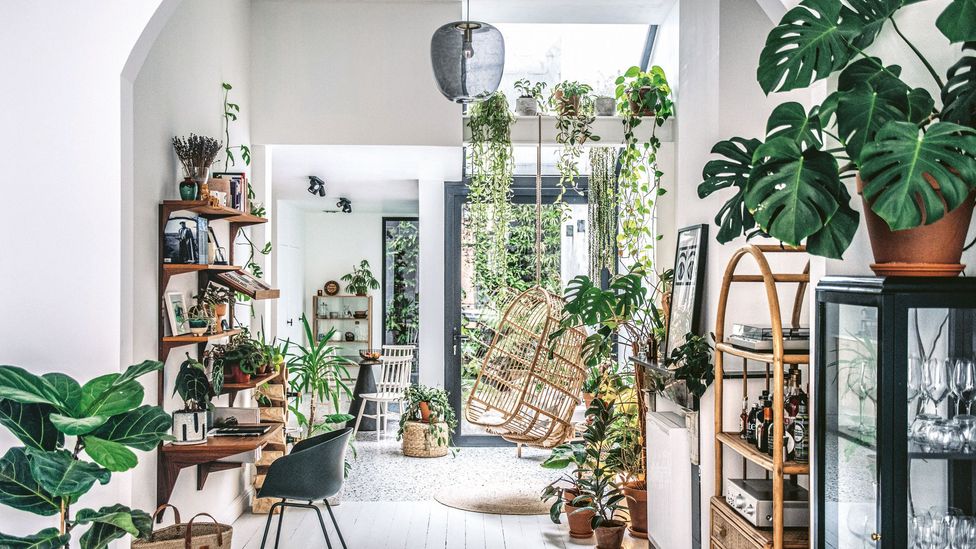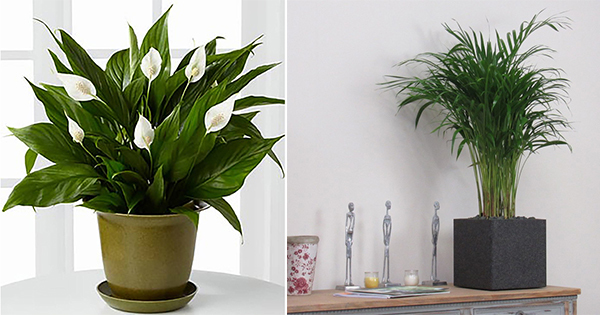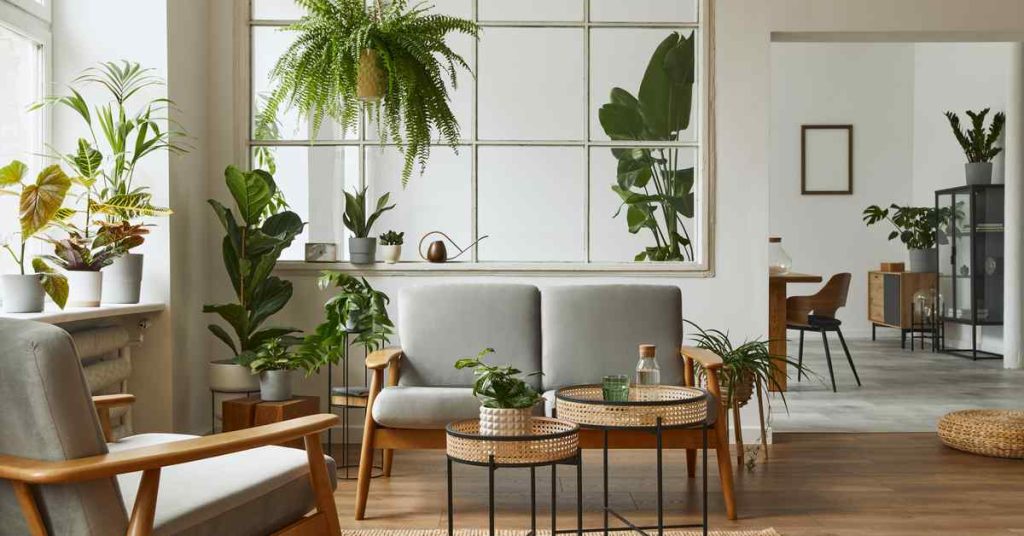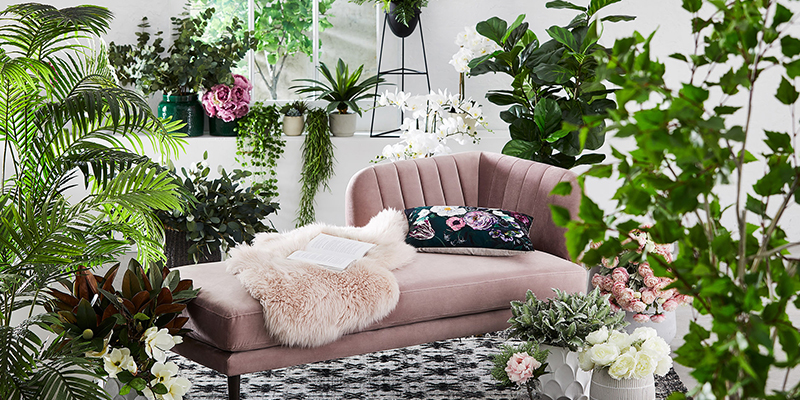Plants can help you in many ways, like cleaning the air, lifting your spirits, and adding a sophisticated touch to your interior design. However, if you want to beautify your home with plants and enjoy their many benefits, you’ll need to know how to properly arrange them in your living room. In this article, we provide detailed instructions on how to arrange plants in the living room.

Table of Contents
Indoor Plants: Tips for Proper Display
There are several things to keep in mind while planning an indoor plant layout for the living room. Houseplants vary greatly in their needs for things like light, pots, the best fertilizers, watering, and more. Even if you’re familiar with the term “houseplant,” you shouldn’t forget that plants do best in the great outdoors. As a result, there are specific guidelines you must follow to ensure the plant’s survival and the cleanliness of your home from the first.
Finding the optimal conditions for your ornamental plants is essential before you put any roots down. Low-light plants, for instance, should be placed in darker rooms. Let’s assume, nevertheless, that your home benefits from a greater number of windows and a more even distribution of natural light. Low-light plants would be a waste of money in this situation.
Size of the Plant
It’s important to do some research into the eventual size of any houseplants you intend to purchase. Follow these guidelines to properly arrange your houseplants based on their size.
Large Plants
One or more huge plants can be a great addition to a living room with ample space. Large, ornate containers are ideal for plants. Potted plants are the perfect option for those who don’t spend much time at home because they require so little care. Arranging these larger plants properly could have the most impact on your productivity and enjoyment.
Large potted plants should be strategically placed to draw attention to other decorative elements such as paintings, curtains, windows, and pieces of furniture. Instead of using the plants as focal points, you might use them to partition off spaces.
Small Plants
As opposed to larger plants, little plants are ideal for decorating any place. Smaller plants not only look great when displayed in complementary aesthetic containers, but also complement natural elements like pebbles, sand, and other natural elements.

Most cactus and succulent plants, as well as the spider plant, are great options for small houseplants. You should put them where they can serve as showpieces. Keep your tiny plants in these spaces.
Be well-versed in the care requirements of any houseplants you wish to place, especially those that are smaller. In addition, a plant stand is ideal for holding smaller plants and keeping them off of countertops and tables. The finest results can be achieved by using a variety of plants and pots to draw attention to a certain area.
Consider Your Plants’ Visual Impact
You should know how the leaves of the plants you want to put in your living room will affect the mood you want to create. The visual weight of a plant is how its leaves guide your movement around a room. Examples are plants that hang upside down, where the leaves are directed downward.
Look at the Plant’s Surface Texture
It’s important to know how different foliage textures affect the mood of a room when you’re considering how to decorate with indoor plants. You can match the plant’s leaves and stems to your current furnishings for a room full of texture or a minimalist aesthetic.

You could search for a plant with wand-like stalks and spongy leaves if you want a simple look in your living room. Another option is to use a variety of ferns and Cactus. You may keep your minimalist aesthetic while adding dimension to the room with these plants.
Indoor plants with large, glossy leaves are a good choice if you’re going for a livelier interior design scheme. The use of many rugs, blankets, and cushions on your furniture complements these plants nicely.
Using Houseplants as Decor
Growing plants indoors is a great way to learn more about your space. There’s a good chance a fern might thrive in that shady nook that never sees the light of day. Plant an orchid on the windowsill in the bright bathroom. You may not realize it, but your home is ideal for growing a lush indoor garden.
The use of houseplants in interior design has several positive effects, such as increasing oxygen levels in the air, decreasing stress levels, and boosting productivity at work or home. Starting with just one or two houseplants on end tables is a great way to get into this, but you may also go all out and construct your very own garden room with hundreds of various plant species. No matter how you arrange them, houseplants are a great way to bring the outside inside and create a little garden that you can care for all year long.
Using Indoor Plants as Decor
There are a few considerations to make when utilizing houseplants for interior design purposes. There’s more to it than just how they look in the space; the plants’ needs and environment are also important factors to think about. Some plants, such as those that can survive in your bathroom despite the lack of natural light, while others can only flourish when placed in direct sunlight. As you expand your home’s greenery, consider these pointers.
Suggestions for Improving the Drainage of Indoor Plants
It’s tempting to just grab any pretty pot and stick your plant in there, but proper water drainage is vital to your plant’s survival. Some plant containers may not have a hole in the bottom for excess water to drain. Other containers, even if they have drainage holes, might still cause water damage to your furniture and flooring if they let out too much water. Many options exist for fixing drainage problems, which greatly simplifies caring for indoor plants.
You may easily slow the rate at which water drains from your pot if you find that it is evaporating too quickly. Before planting, cover the hole with a rock or fragment of a shattered pot. This won’t stop the water from getting through, but it will slow the flow down enough for the plant to absorb what it needs. Your question about how to arrange plants in the living room was answered above.







